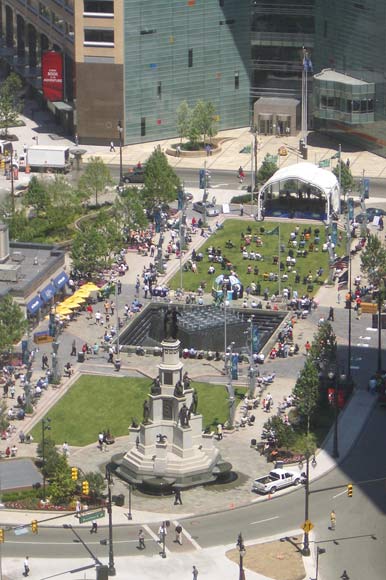UPDATE (November 13, 2011): The first agenda item--expanding the childcare center--has been dropped from this month's agenda. Here is the text of a brief message from Arthur Hill, Vice Chairman, RP&Z, on the matter:
Item #1 on the November meeting agenda has been removed.
Item #2 concerning the RTC application will be the only item on the agenda.
Note: This month's agenda includes consideration of a proposal to replace the Town Center Office Building at the corner of Reston Parkway and Bowman Towne Drive with a 23-story, Class A office and retail building. Check the agenda below for additional details.
THE RESTON PLANNING AND ZONING COMMITTEE
MEETING AGENDA
Monday, November 21, 2011 – 7:30 pm
Community Room
North County Government Center
12000 Bowman Towne Drive, Reston
1. Luis and Carla Marty of 1307 Deep Run Lane, Reston, have filed a Special Exception application (SE 2011-HM-010) to increase the number of children in their childcare operation from seven (7) to ten (10) children. The property is located at Tax map 012-3((04)) (6) 0046. The Planning Commission public hearing is scheduled for December 15, 25011@8:15 p.m.
2. RTC Partnership, LLC has filed a Planned Residential Community (PRC) Plan to remove the current office building known as the “Town Center Office Building” at 1760 Reston Parkway, and redevelop a 23 story, Class A mixed use office and retail building. The building will consist of approximately 413,700 square feet of office uses and approximately 5,200 square feet retail and restaurant use, with a Floor Area Ratio of 4.08. Parking for the proposed building will feature both below and above grade parking spaces. The above ground portion of the parking garage will sit atop retail uses and will be screened with a context sensitive façade treatment that will be harmoniously in the office structure.
Structured parking would be 1084 and 24 surface spaces
The office building will have a LEEDS silver design for energy efficiency.
3. Committee discussion of any other business, new or old, and approval of previous meeting minutes.
4. Approve next meeting date and adjourn.
Agenda subject to change without notice by order of the Chairman, David Vanell, (703) 904-9299, or Arthur S. Hill, Vice Chairman, (703) 264-1178.
October 30, 2011




